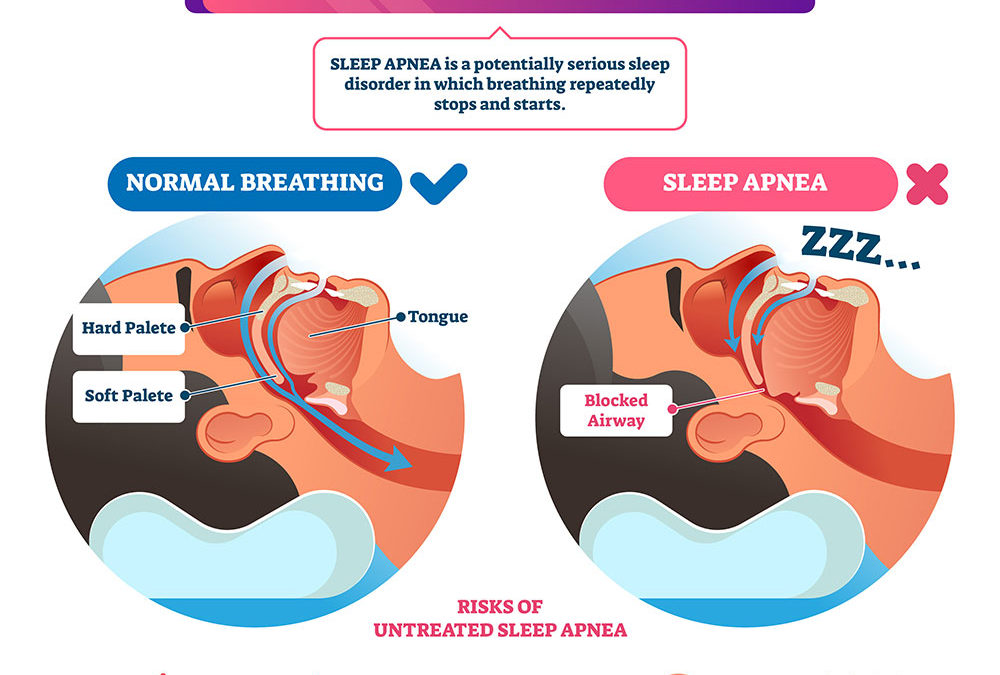Sleep apnea is a topic that many people may casually toss around in conversation. Some may even joke that heavy snoring is considered to be sleep apnea. Essentially, sleep apnea is a condition that affects a person’s breathing while he or she sleeps. It exists in two forms: central sleep apnea and obstructive sleep. The more common form of the two is obstructive sleep apnea, which is the result of a blockage in the airway as soft tissue naturally collapses when a person is sleeping. Meanwhile, with central sleep apnea, there is no blockage in the airway, but the brain faces an issue signaling the muscles to breathe. Let’s debunk some myths about sleep apnea.
Let’s first understand the risk factors that increase your chances of experiencing obstructive sleep apnea:
- Severe nasal congestion
- Obesity
- Diabetes, asthma, and smoking
- Being a male over the age of 40
- Narrowed airway, hypertension
- Having a family history of sleep apnea
In severe conditions, obstructive sleep apnea could cause cardiovascular problems. As blood oxygen levels fall, obstructive sleep apnea could raise one’s blood pressure, resulting in an increased risk for heart illnesses. Inconsistencies in oxygen supply may also lead to abnormal heart rhythms.
Myth 1: I Don’t Snore, So I Don’t Have Sleep Apnea
While it is common for people with obstructive sleep apnea to snore, snoring isn’t a prerequisite for having the condition. What causes obstructive sleep apnea is the relaxation of the muscles in the back of your throat. This obstructs regular breathing. These muscles are critical to forming the uvula, the structure of your soft palate, tongue, and tonsils. If these muscles relax too much, they become soft and could block the airway, making it more difficult for the person to breathe.
Snoring is a result of these structures softening, but although you do not snore, it doesn’t mean you do not suffer from sleep apnea. As a matter of fact, many people don’t even realize they have obstructive sleep apnea and believe they sleep without waking up once at night.
Myth 2: I Don’t Have Sleep Apnea Because I’m Not Overweight
While it is common that obesity increases the risk of having sleep apnea, it isn’t a prerequisite. People who experience the condition are of all shapes and sizes. The myth exists because approximately half the people who have obstructive sleep apnea are obese. Fat deposits situated around the upper airway may block the airway. However, thin people can have the disorder, too.
It’s critical to note that while being overweight increases the risk of developing obstructive sleep apnea, a person who has mild sleep apnea could get better with exercise and a healthy diet. Losing a few pounds could mitigate obstructive sleep apnea.
Myth 3: Sleep Apnea Is Not Treatable
Contrary to popular belief, obstructive sleep can be treated! Firstly, a person needs to identify if he or she is experiencing symptoms of sleep apnea. Ask your partner about your sleep patterns through the night. If you experience daytime symptoms of drowsiness and fatigue or would wake up tired or with a headache, it could be a sign you have sleep apnea.




